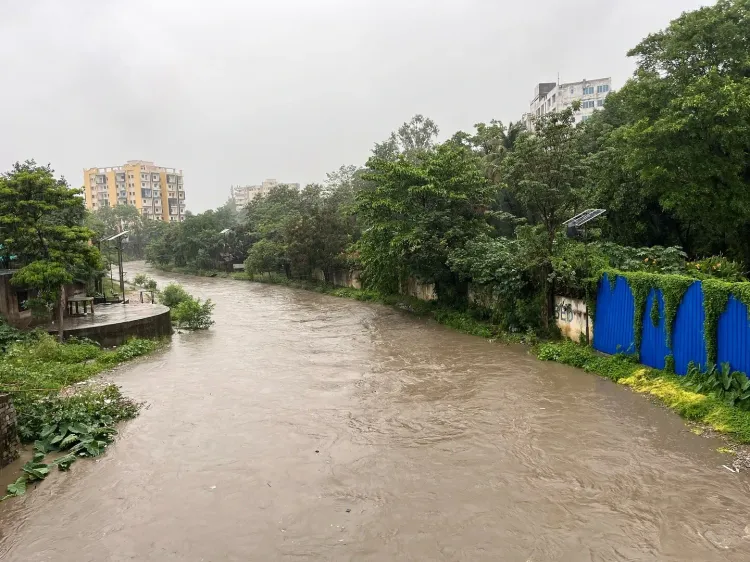What Impact Did the Monsoon Have on Jharkhand?

Synopsis
Key Takeaways
- Severe rainfall has disrupted daily life across Jharkhand.
- House collapses have led to tragic fatalities.
- Authorities are monitoring water levels and closing roads to ensure safety.
- Jharkhand has received significant excess rainfall compared to seasonal averages.
- Community resilience and government preparedness are essential to mitigate future disasters.
Ranchi, June 23 (NationPress) The ongoing heavy rains have drastically disrupted daily life across numerous districts in Jharkhand. Urban centers including Ranchi, Ramgarh, Latehar, Jamshedpur, Hazaribagh, Bokaro, and Giridih are experiencing severe challenges due to waterlogging, with floodwaters infiltrating homes in lower-lying regions.
This unrelenting downpour has resulted in several house collapses and incidents of individuals drowning in rivers, reservoirs, and waterfalls.
In the village of Rasoi Dhamna Baratola in Hazaribagh, the roof of an old house collapsed during the heavy rain late Sunday night.
A couple, Habib Ansari and his wife Jumera Khatoon, both approximately 50 years old, tragically lost their lives when they were trapped under the rubble. Villagers recovered their bodies on Monday morning.
In the Palamu district, two children were swept away while bathing in swollen rivers. A 12-year-old boy, Rakesh Kumar Amanat, from Uksu village under the Panki police station, was found deceased on Monday.
Another child, 14-year-old Sameer Ansari, from Basaria village, also drowned in the Amanat River, and his body is still missing.
On Saturday evening, two additional children drowned in Barka Bandh in Palamu town.
In the Chandrapura block of Bokaro, a portion of a recently constructed bridge and its guard wall over the Jamunia River were swept away by the rains. The bridge had not yet been opened for use.
As a safety measure, authorities have temporarily shut down access to the popular Panchghagh Waterfall in Khunti district due to a significant increase in water levels.
Recent data from the Meteorological Department indicates that Jharkhand has received 102% more rainfall than the seasonal average so far.
Ranchi leads with an astonishing 265% excess rainfall, closely followed by Latehar (241%), Lohardaga (190%), Seraikela-Kharsawan (172%), and Palamu (156%).
Only Deoghar, Godda, and Pakur districts have experienced slightly below-average rainfall, with deficits ranging from 12% to 19%.







